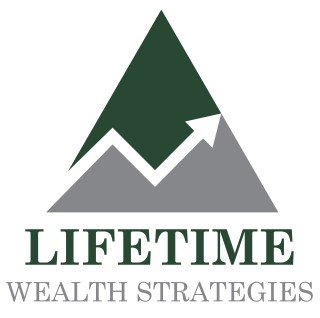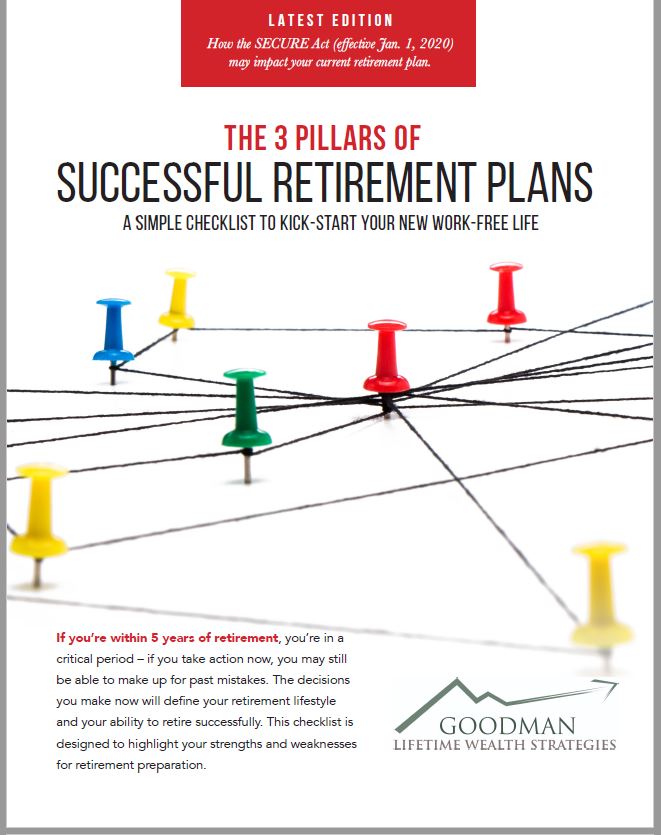A recording of our presentation “Planning Your Retirement Income in Ways That Are Best For You & Navigating Stock Market Volatility” is available for viewing on our YouTube Channel as well as some of the shorter clips from the presentation.
In this month’s recap: Stocks dropped as rising bond yields, and recession fears pushed investors to the sidelines
U.S. Markets
Stocks trended lower in September as investors retreated in the face of rising bond yields and growing recession fears.
The Dow Jones Industrial Average dropped 8.84 percent, while the Standard & Poor’s 500 Index fell 7.95 percent. The Nasdaq Composite lost 9.13 percent.1
Stubborn Inflation
Investors came into September with optimism that the inflation report would show a meaningful decline in inflationary pressures. But the August Consumer Price Index (CPI) report showed a rise of 8.3 percent in consumer prices from a year ago, which was above consensus. Stocks sagged, and bond yields surged on the news.2
Though the CPI number was incrementally lower from June and July, it was the rise in core inflation (excluding energy and food prices) of 6.3 percent (an increase from its 5.9 percent rate the previous two months) that unnerved investors.2
Fed’s Outlook
The Federal Open Market Committee’s (FOMC) decision to hike interest rates by 75 basis points in late September didn’t come as a surprise. But what unsettled investors may have been the Fed’s message that rate increases were likely to go higher for longer than the markets had anticipated.3
FOMC members suggested that interest rates may rise by at least another 1.25 percentage points by year-end, with short-term rates potentially reaching as high as 4.6 percent in 2023 and no rate cut likely until 2024. FOMC members also revised economic forecasts, including raising their estimates for inflation and unemployment.3
Global Central Banks Follow Fed’s Lead
Following the FOMC news, bond yields rallied. The 10-year Treasury yield increased for the eighth straight week, and the two-year Treasury yield reached yields not seen since 2007. Higher rates prompted recession fears as multiple global central banks raised rates in tandem with the Fed.4
Sector Scorecard
All industry sectors ended lower for the month, with losses in Communications Services (-11.93 percent), Consumer Discretionary (-8.40 percent), Consumer Staples (-8.73 percent), Energy (-10.53 percent), Financials (-8.14 percent), Health Care (-2.93 percent), Industrials (-10.86 percent), Materials (-9.81 percent), Real Estate (-13.95 percent), Technology (-12.35 percent), and Utilities (-11.88 percent).5
What Investors May Be Talking About in October 2022
In mid-October, China’s Communist Party will be holding its five-year planning meeting that will likely elect President Xi to a third term and possibly as “president for life.” This meeting will also craft the framework for China’s economic and foreign policy for the next five years.6
The most immediate issue is whether China will maintain its zero-COVID policy, a decision that has slowed domestic and international economic growth, affected global supply chains and resulted in rising disaffection among its citizens.
Observers also will be watching for any policy statements concerning Taiwan. Any Chinese talk that implies possible military action may add another geopolitical risk for the financial markets.
China is an essential cog in the global supply chain and an important market for Western products and services. The degree to which it pursues cooperation or confrontation will hold implications for global economies and markets in the years ahead.
World Markets
Overseas markets dropped in September as currency concerns, rising yields, and weak economic performance discouraged investors. The MSCI-EAFE Index lost 10.06 percent.7
Among European markets, Spain fell 6.59 percent, France declined 5.92 percent, and Germany slipped 5.61 percent.8
Pacific Rim markets also were under pressure, with Hong Kong shedding 13.60 percent, Australia dipping 7.34 percent, and Japan sliding 7.67 percent.9
Indicators
Gross Domestic Product: The third estimate of second-quarter GDP growth was -0.6 percent on an annualized basis. The personal consumption expenditures (PCE) price index was revised higher by 0.2 percentage points to 7.3 percent, indicating continued inflationary pressures.10
Employment: Employers added 315,000 jobs in August. The unemployment rate rose to 3.7%, up from last month’s 3.5% level, though the jump was attributable primarily to an increase in the labor participation rate, from 62.1% to 62.4%. Wages continued to grow, rising 0.3% in August and 5.2% from 12 months ago.11
Retail Sales: Retail sales rose 0.3 percent in August, powered by automotive sales. Excluding vehicle-related and gasoline sales, retail sales fell 0.3 percent.12
Industrial Production: Production at the nation’s factories, mines, and utilities slipped 0.2 percent, though manufacturing output saw a slight increase of 0.1 percent.13
Housing: Housing starts rose 12.2 percent in August, propelled by a 28.6 percent increase in multi-family housing starts.14
Existing homes sales fell 0.4 percent from July to August and 19.9 percent from a year ago. The median sales price dropped for the second straight month.15
New home sales climbed 28.8 percent, representing the second biggest increase on record. The median price of new home sales fell from a record high of $458,200 to $436,800.16
Consumer Price Index: Consumer prices moderated in August as year-over-year inflation rose 8.3 percent, a slight decrease from its 8.5 percent pace in July and down from its recent peak of 9.1 percent in June. But core prices (excluding food and energy) rose 6.3 percent in August, up from June and July.17
Durable Goods Orders: For the second-consecutive month, orders of long-lasting goods fell, declining 0.2 percent in August. Excluding defense, orders were lower by 0.9 percent.18
The Fed
The Federal Open Market Committee (FOMC) announced its third consecutive 0.75 percent hike in the federal funds rate following its September 20-21 meeting.19
The FOMC also issued new projections suggesting that interest rates may be increased by another 1.25 percentage points by December. It also said unemployment may rise to 4.4 percent by the end of 2023 (up from August’s 3.7 percent level) and that interest rates may reach as high as 4.6 percent in 2023, with a rate cut unlikely until 2024.19
| MARKET INDEX | Y-T-D CHANGE | September 2022 |
| DJIA | -20.95% | -8.84% |
| NASDAQ | -31.37% | -9.13% |
| S&P 500 | -23.62% | -7.95% |
| BOND YIELD | Y-T-D | September 2022 |
| 10 YR TREASURY | 2.29% | 3.80% |
Sources: Yahoo Finance, September 30, 2022.
The market indexes discussed are unmanaged and generally considered representative of their respective markets. Individuals cannot directly invest in unmanaged indexes. Past performance does not guarantee future results. U.S. Treasury Notes are guaranteed by the federal government as to the timely payment of principal and interest. However, if you sell a Treasury Note prior to maturity, it may be worth more or less than the original price paid.



Leave a Reply